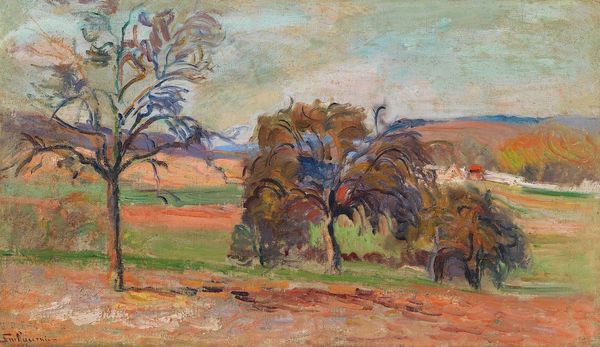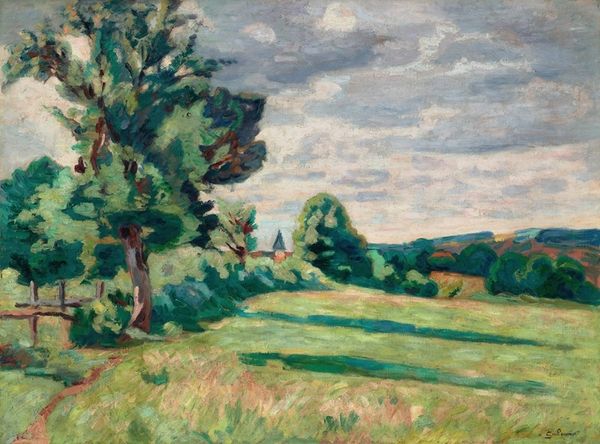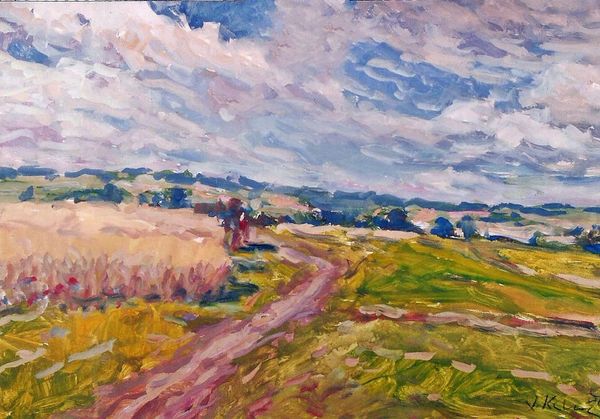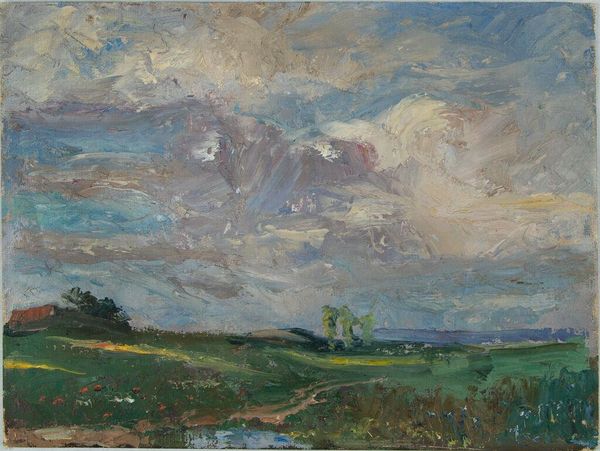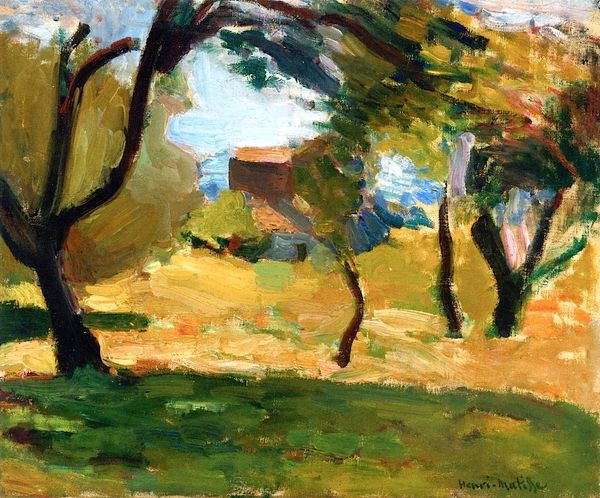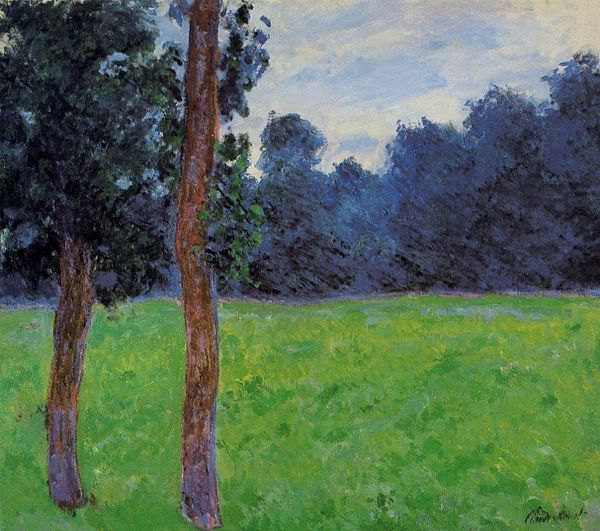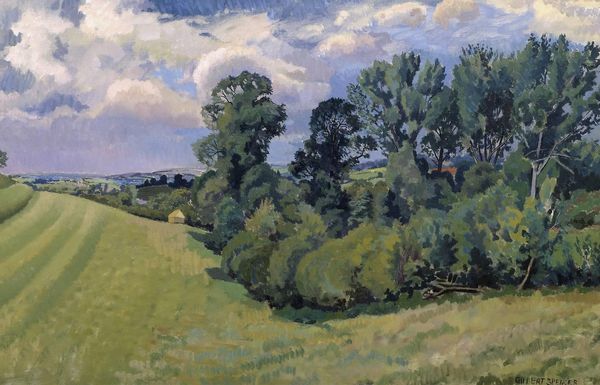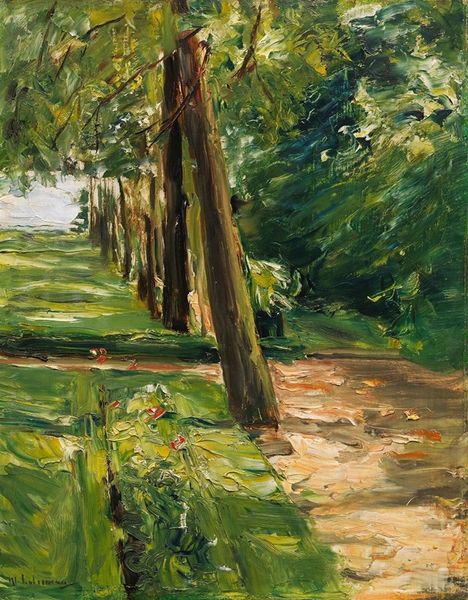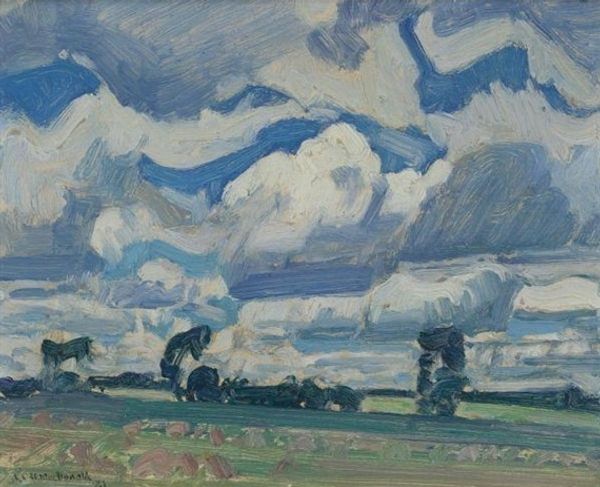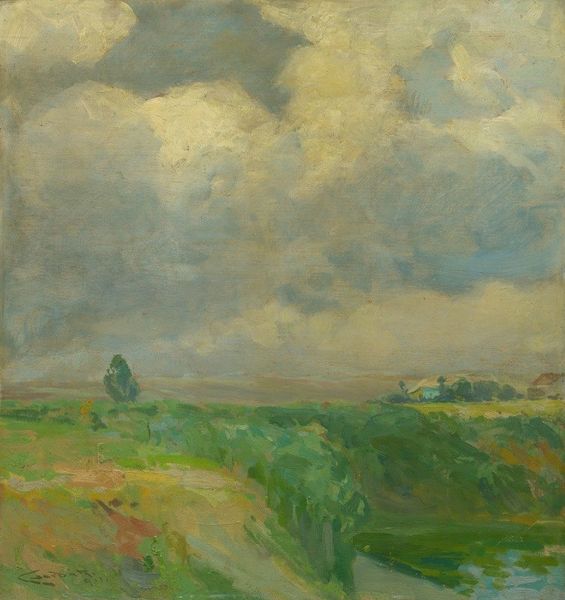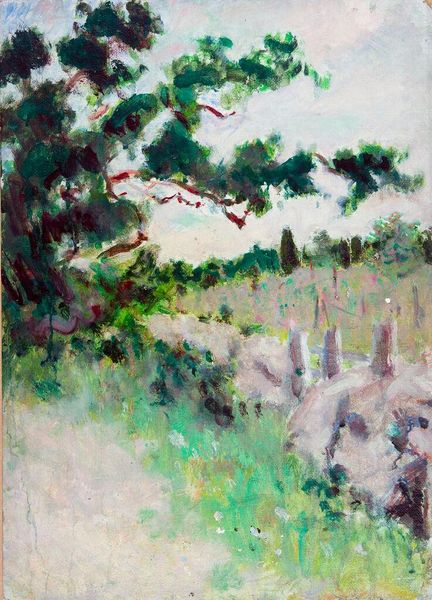
Copyright: Public Domain: Artvee
Curator: This is Maximilien Luce's "Gardien Et Son Troupeau Sur Le Chemin Aux Environs De Moulineaux," painted around 1905. Editor: Immediately, I'm struck by the light—almost fractured, impressionistic—and the somewhat unusual composition. The dominant tree almost bisects the scene. Curator: Precisely. Note the calculated use of color. Luce, though associated with Neo-Impressionism and Pointillism, embraces a looser, more expressive application of paint here. Observe how he juxtaposes complementary colors to intensify the luminosity. Editor: Indeed. It feels… unstructured, raw almost. This departs quite drastically from strict divisionism. I am interested to understand this deviation when considering the political implications present in this particular subject matter: herding and farmwork, common working class scenery... Curator: Politically, Luce was very committed. "Gardien et son Troupeau" displays what we know of him, a sympathizer of working class citizens during intense moments of labor organization in Paris. This work moves between idealizing labor or romanticizing those affected by socio-economic tension. What are your thoughts about his intentions? Editor: He highlights the relationship with laborers without heavy-handed politics... He romanticizes. Take note how these are working class people as subjects in an era where Realism has just passed as a movement. So does it not romanticize them when capturing labor, pastoral subjects rather than, say, a dark urban scene or industrial unrest? Curator: That’s a valid interpretation. And thinking about semiotics: the road itself acts as a vector, driving the eye toward that almost obscured figure of the shepherd, his humanity barely discernible amidst the flock. The tree, then, acts as a visual anchor and, if one wants to be daring, a kind of arboreal guardian of this traditional pastoral existence. Editor: True, if we are to read the road and figure as central compositional vectors. However, look closely, and that road has not been cemented like those constructed as markers of imperial authority. The flock nearly obscures his image to imply not a heroic figure, but the subject and victims to socio-political changes from unregulated capitalist society... Interesting tensions embedded formally as well as in content here. Curator: That brings such necessary historical and contextual sensitivity to the fore when approaching any close analysis of the formal. That tension is exactly what holds one captive about Luce.
Comments
No comments
Be the first to comment and join the conversation on the ultimate creative platform.
